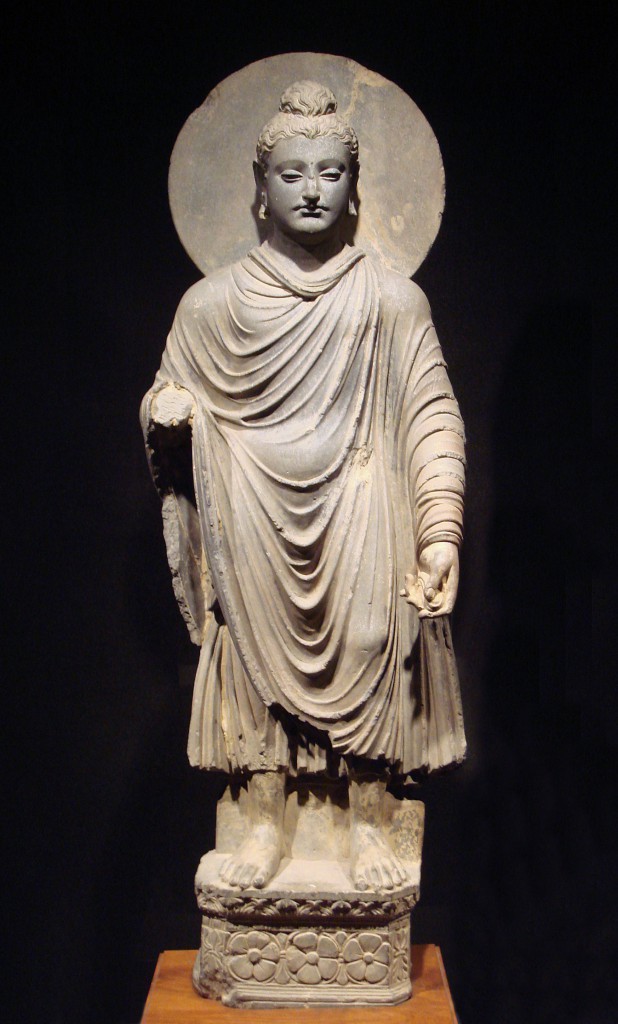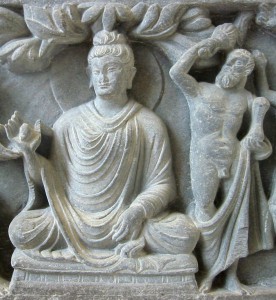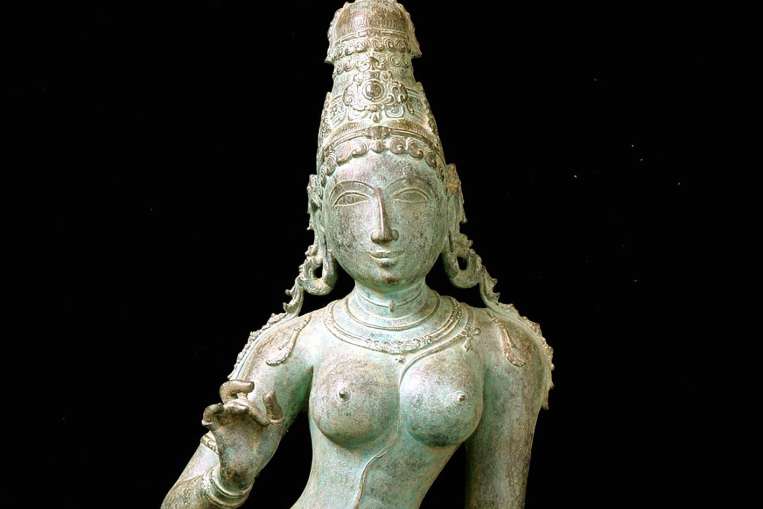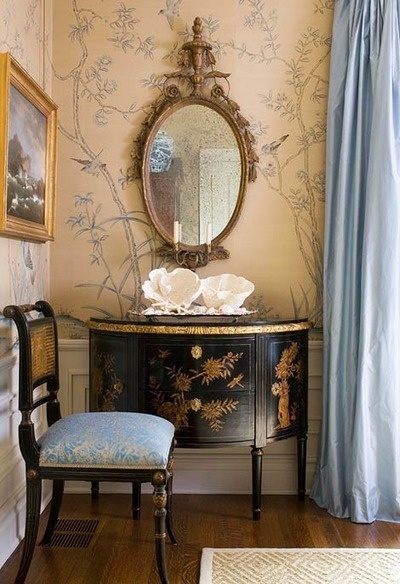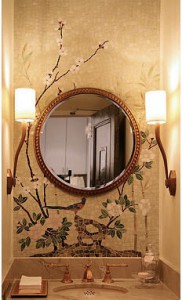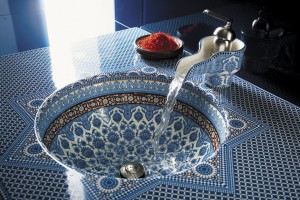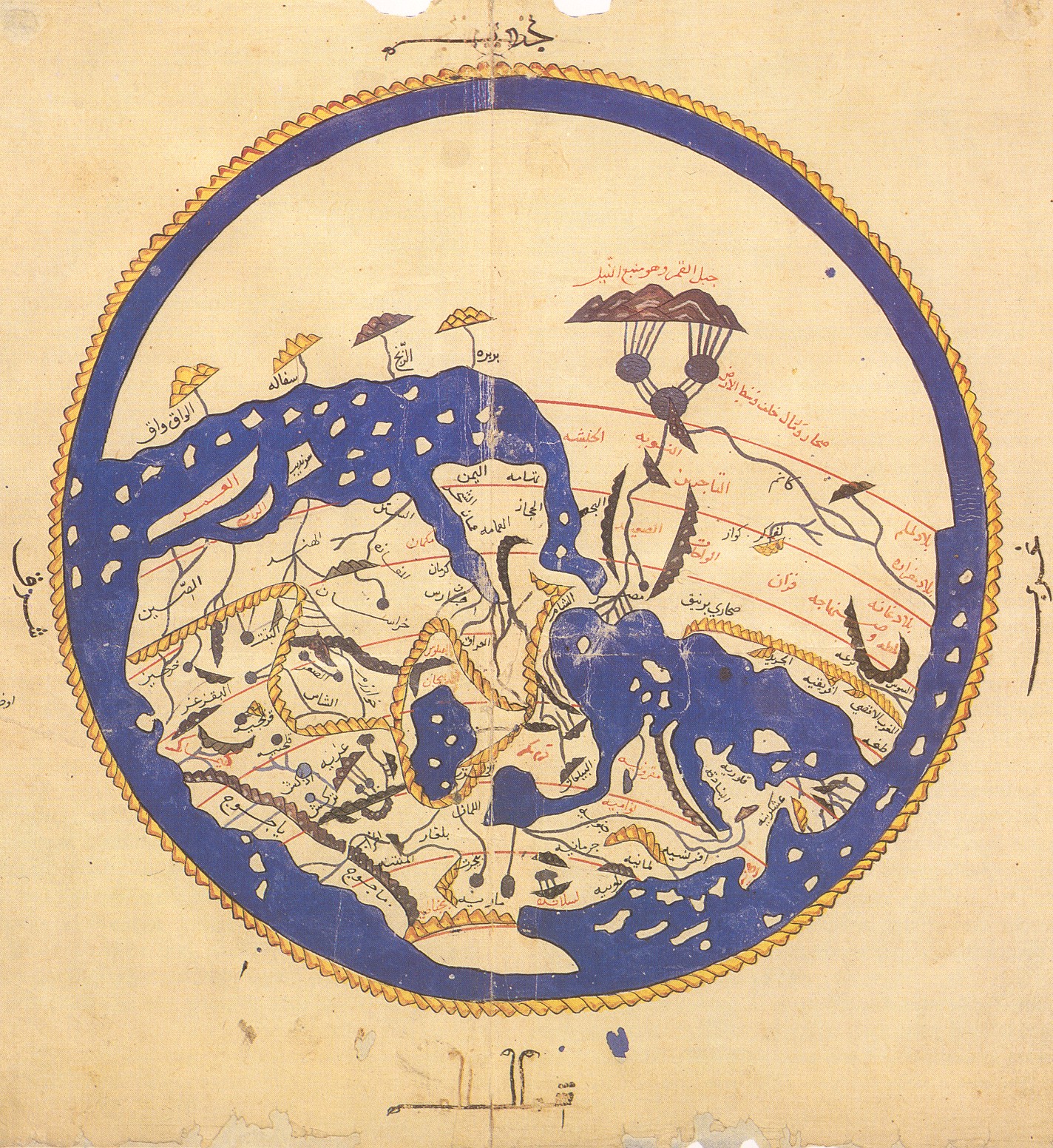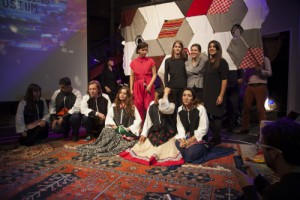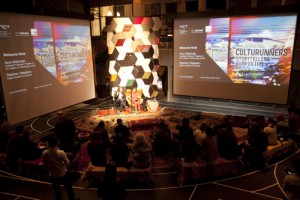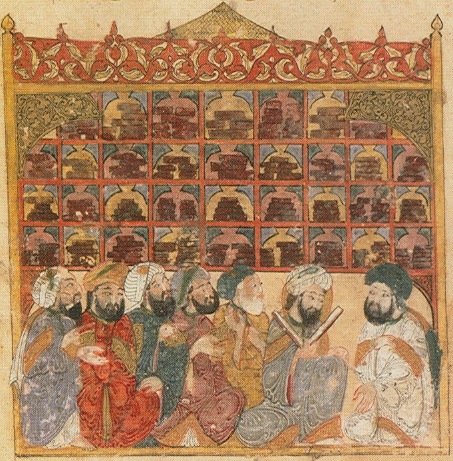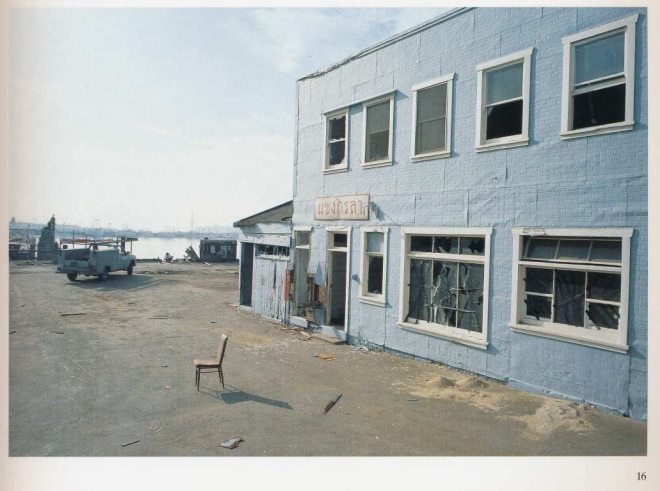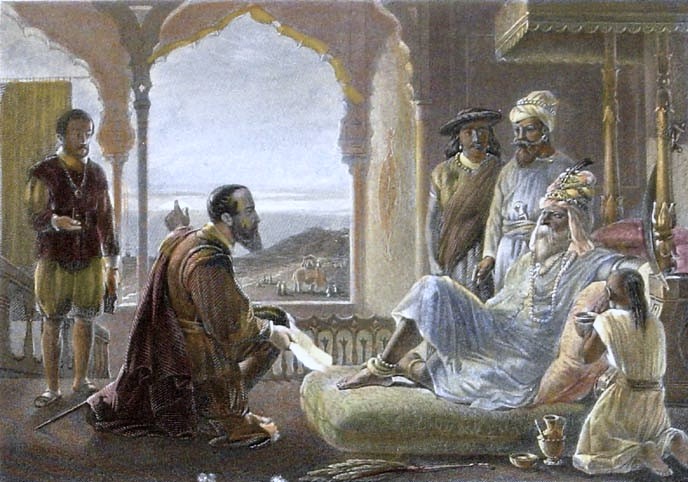Pair of side curtains for a bed with chinoiserie and bizarre designs
French
Early 18th century
Linen, embroidered with wool and silk
Panel .1a-c: 134 × 34 in. (340.4 × 86.4 cm); panel .2a-c: 137 × 34 in. (348 × 86.4 cm)
Irwin Untermyer (until 1953; to The Metropolitan Museum of Art)
Virginia Museum of Fine Arts, Richmond, 1945. The Human Story in Needlework, no. 56.
A. Standen, Metropolitan Museum of Art Bulletin, December 1954.
Chinoiserie (French for Chinese-esque) is a decorative style in European art, design, and architecture influenced by Chinese motifs and techniques. It began in the 17th century and gained its popularity in the 18th century. It assimilates into rococo by the works of Francois Boucher thus the two shares various similar qualities and characteristics such as the asymmetrical designs, curves, light colours, ornate, and playful both in theme and style.
This pair of side curtains, embroidered with chinoiserie designs, would have decorated the sides of a European state bed of about 1700, usually reserved for important guests. The decorative style reflects a romantic view of China derived from illustrations in books by Western travellers. The floral motifs, figures dressed in vaguely Chinese garments characterized by the wide-sleeve and the over and under skirt, fantastic creatures such as phoenixes and dragons highlight the interest in the theme of fantasy and the exotic. Bizarre silks are a style popular in Europe during the late 17th to early 18th century yet its precise origin is still undetermined. The style “bizarre silk” is characterized by the bold colours, large-scale, and asymmetrical patterns of silk fabrics featuring stylized leaves and flowers. Asymmetry, a characteristic prevalent in Chinese design and architecture is distinct from Europe’s artistic style focused on balance and order. These early chinoiserie embroideries display an attempt to capture the aesthetic of disorder that Europeans were intrigued by.
Consider the figures and the clothing styles on the embroidery. Some of them look European and are florid faced, a characteristic of the rococo style. Some figures are wearing loose gown with wide-sleeves called banyan, a garment worn by men in the 18th century influenced by Asian clothing. This choice of inexpensive yet durable garment also reflects a sense of informality and practicality. Men of intellectual and philosophical bent were usually painted in portraitures wearing banyans. It could then be interpreted that the figures holding various kinds of instruments are learning the art of their occupations while being stimulated by the natural environment outdoors surrounded with flowers and fantastic mythical beasts. It is interesting to note that there are both men and women figures practising studious habits outdoor. This could reveal the desire, and perhaps reality, of equality between men and women as women are not merely contained to the domestic space. They too belong in the intellectual domain and exterior environment hence the sense of equality. Though the floral motifs reflect the theme of feminity, the mythical beasts suggests the theme of power. It seems like women are able to gain a sense of agency even within the bedroom space and through imagination. However, only the Chinese-looking man with drooping moustache and full robe in panel .1a-c is depicted as most powerful as he is able to control two dragons with either a robe or a chain.
The curtains are made of linen embroidered with wool and silk. These materials emphasize the significance of textiles in Chinoiserie during the 18th century. It was not Chinese textile design but the designs of Chinese porcelains and lacquers that influenced the European textile chinoiserie. The two main decorative textiles produced in China for the European market during the 18th century were embroideries and painted silks. Embroidery is a form of compound cloth construction where a fabric is ornamented with designs from a threaded needle. The bed curtains reflect the form of embroidery called the needle-point. It is a hand-embroidery form where rounded stitches fill the base scrim or needlepoint cloth completely. The resulting piece is heavy and stiff. Needlepoint is used for upholstery, pillow tops, hand-made rugs/carpeting, and framed wall art. Very small stitches are termed petit point and very large stitches are called gros point (Nielson 83). All the designs are depicted in an extraordinary range of colours on a brilliant yellow silk ground that seems to mimic gold threads which was incorporated greatly during the 16th-18th century in embroidery.
Complete bed furnishings from the 17th and 18th centuries are rare thus making this well-preserved curtain pieces gifted from Judge Irwin Untermyer a significant and precious material to be studied and appreciated by all at the museum. Furthermore, it is interesting to realize that such style, seen frequently in early 18th century, French canvas work, represents the early ungainly struggle before the elegant French rococo style.
Works Cited
Brett, Katharine B.. Bouquets in Textiles: An Introduction to the Textile Arts. Toronto: Royal Ontario Museum of Archaeology, 1955. Web. 2nd November 2015.
A. Standen. “Embroideries in the French and Chinese Taste”. Metropolitan Museum of Art Bulletin. December 1954. 144-146. Antiques, LXVII, 1955. P 420, fig. 6 (detail); Untermyer Needlework, 1960. Pp. lxiii-lxiv, 59. fl. 144, colour pl. 145, figs 187, 188. Web. 2nd November 2015.
Highlights of the Untermyer Collection of European and Continental Decorative Arts. New York: Metropolitan Museum of Art, 1977. GoogleBooks. Web. 2nd November 2015.
Pair of side curtains for a bed. 18th century. Linen, embroidered with wool and silk. The Metropolitan Museum of Art, New York. Web. 2nd November 2015.
Nielson, Karla J.. “Yarns and Fabric Construction. Interior Textiles: Fabric, Application, and Histories. New York: John Wiley & Sons, 2007. 63-88. GoogleBooks. Web. 2nd November 2015.





